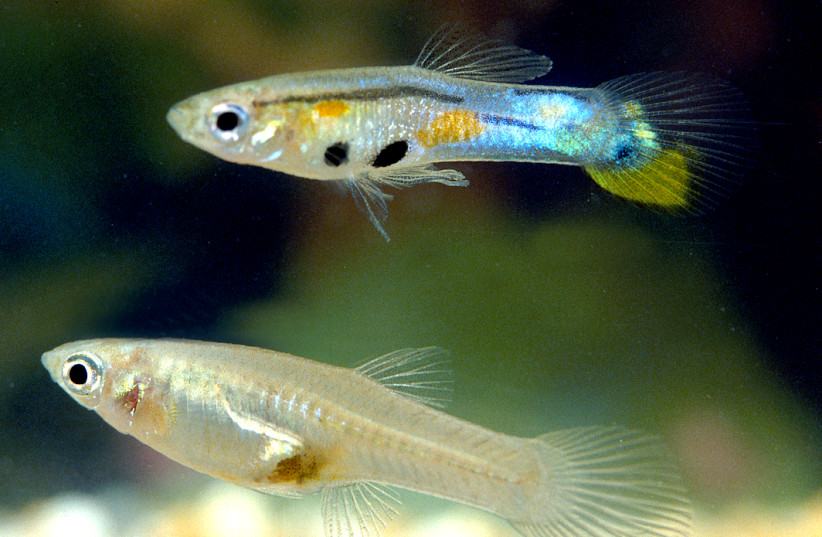Tiny fish called the Trinidadian guppy (Poecilia reticulata) serves as an excellent species for studying the relationship between adaptive evolution across different environmental circumstances because they mature very fast (with one generation living for a year to 18 months and producing offspring every three or four months) and they inhabit different ecological environments that can be easily manipulated.
Now these little fish with a colorful, feather-like tail have surprised scientists when faced with the so-called “volunteer’s dilemma” which is that individuals are less likely to cooperate if they’re in a large group.
Various studies have demonstrated this in humans – but guppies appear to buck the trend.
Animals can incur both costs and benefits from associating with others. Individuals in larger groups suffer greater competition and increased risk of disease compared to those in smaller groups, but there is evidence that individuals in larger groups have access to more information and resources. create greater confusion for predators and are less likely to be attacked if there is an attempt to attack them due to selfish herd geometry and the dilution effect.
In the new study at the University of Exeter in the UK, guppies in larger groups were more likely to risk approaching a predator to gather information for the shoal.
“When faced with a possible predator, guppies have to balance risks,” said Rebecca Padget, a postgraduate research student from Exeter’s Center for Research in Animal Behavior. “At least one guppy needs to approach to find out if there is a threat, and if it does that, it could get eaten. but if none of the guppies take this risk, the whole group is in danger.”

The team published in the journal Proceedings of the Royal Society B under the title “Guppies in large groups cooperate more frequently in an experimental test of the group size paradox.”
What is the volunteer's dilemma?
Mathematical models suggested that individuals in larger groups should be less willing to cooperate.
To test this, the researchers placed a clay model of a pike cichlid (a natural predator of guppies) in a tank containing groups of five, 10, and 20 guppies. Surprisingly, guppies in the large groups were most likely to approach and inspect the predator. After inspecting a predator, guppies return to the group. Previous research has shown that their behavior then signals danger to others.
In the study, an “inspection” was recorded when a guppy went within 30 centimeters of the predator. This was usually done either by individuals or small sub-groups of the main shoal.
Individuals in large groups inspected an average of 14 times in the seven-minute trials. Guppies in medium groups were least likely to approach – going an average of seven times each and also spending the most time in “refuges” (behind plants or near the gravel at the edge of the tank).
“We can’t be sure why guppies in large groups cooperated more,” Padget said. “We know guppies have different personalities, so it could be that larger groups are more likely to contain more cooperative individuals – and others then follow their lead.”
